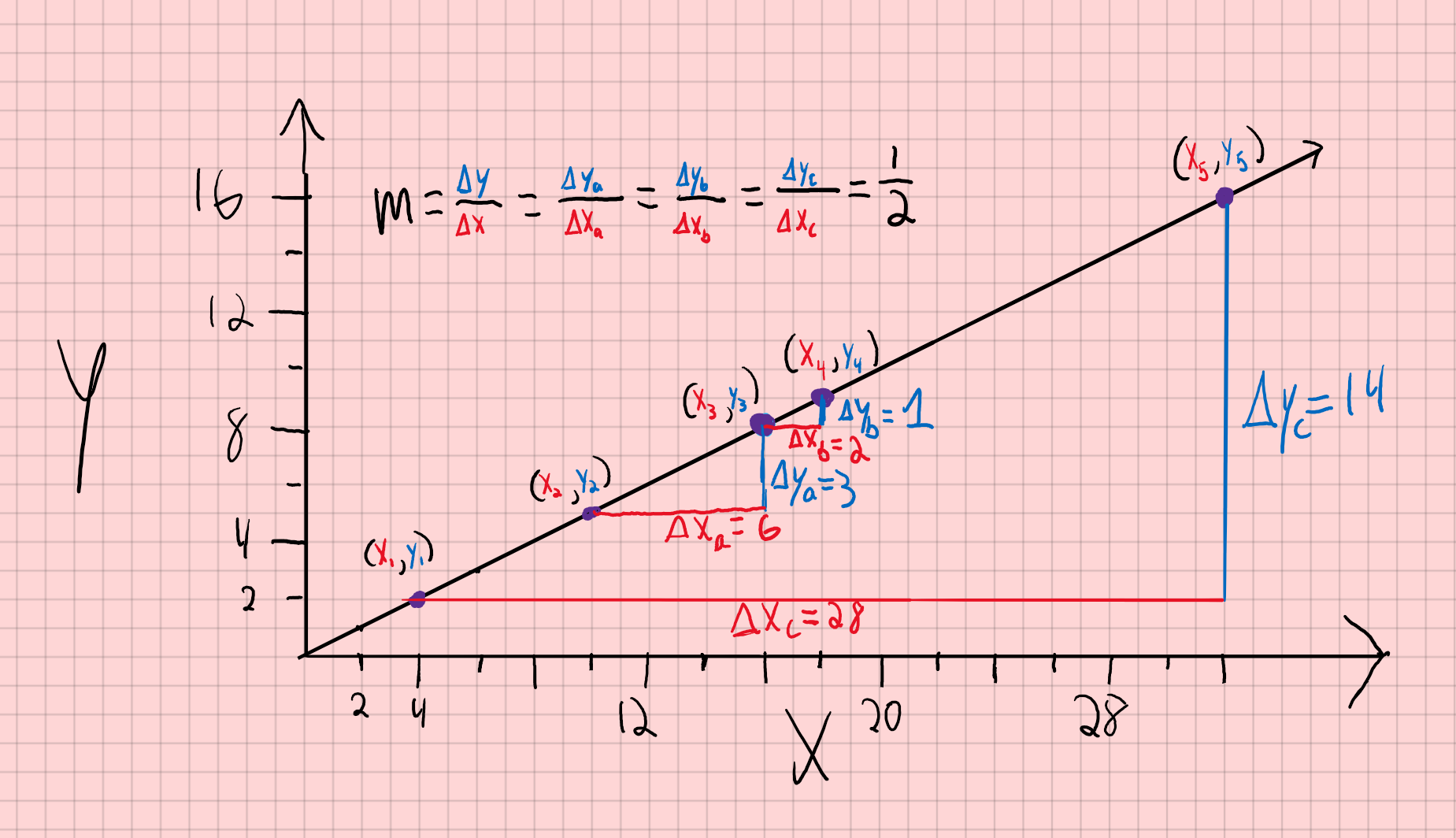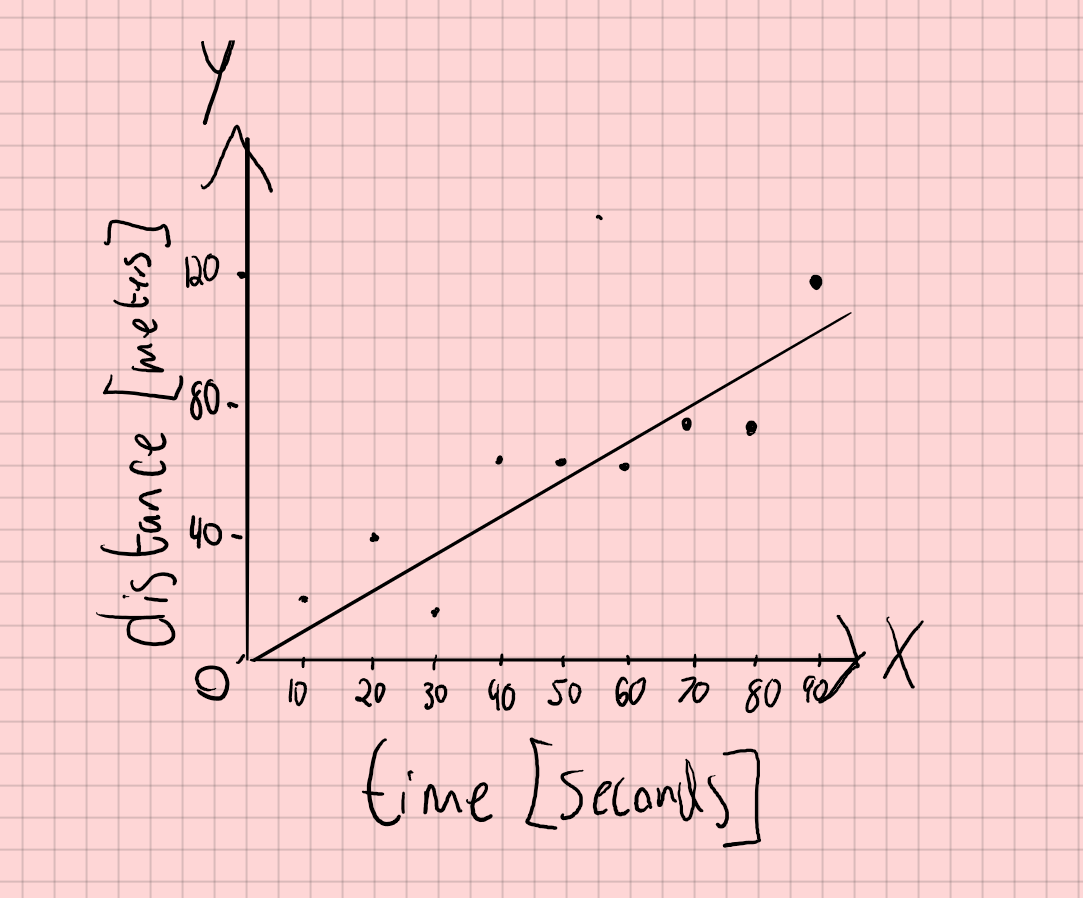A brief overview of Slope and it’s units
Aidan Philbin
Slope, or m as we often write it in equations, describes the way a function changes. The slope of a function y(x) is the change in y divided by the change in x:
(1) m = Δy/Δx
Linear graphs are graphs of straight lines, and can be defined by their slope, m, and their y-intercept, b:
(2) y(x) = m*x + b
In the figure below, there is a linear function plotted on a graph. If we want to find the slope of this function, we must choose two points on the line, and use Equation (1). Let’s use (x2, y2) and (x3, y3). We will have:
m = Δya/Δxa = (y3-y2)/(x3-x2) = 3/6=1/2
Because this function is linear, we find the same slope using any two points, as shown below.

Alright so we know how to interpret the slope of a line as it’s rate of change, but what would the units of slope be? Let’s work trough a word problem to sort it out.
A runner runs for different time intervals, and records how far they run each time. They produce the scatter plot below, and fit a line to it to find the slope. What exactly are they finding? What are the units?

So if they’re calculating slope, they’re using Equation (1): m = Δy/Δx. Looking at the plot, the y-axis has units of distance and the x-axis has units of time, so m = Δy/Δx = Δdistance/Δtime. We recognize distance/time as velocity. Because this is a line of best fit, the slope is the average velocity of the runner. So for the units, in this plot slope has units of meters/second.
Generally:
units of slope=(units of y)/(units of x)

